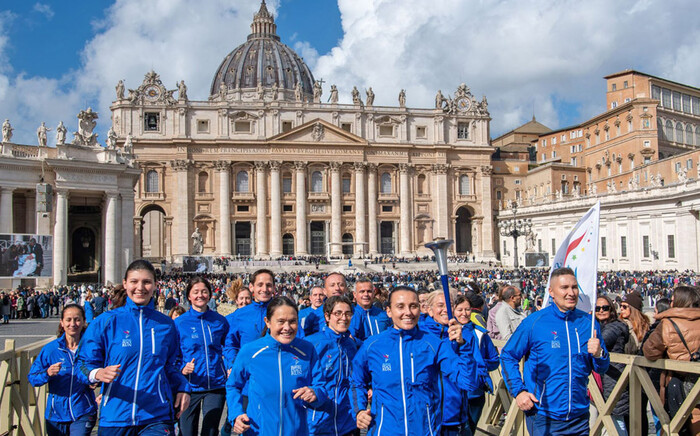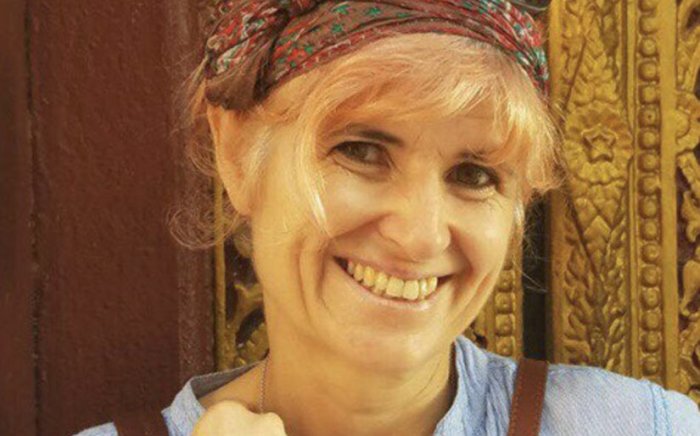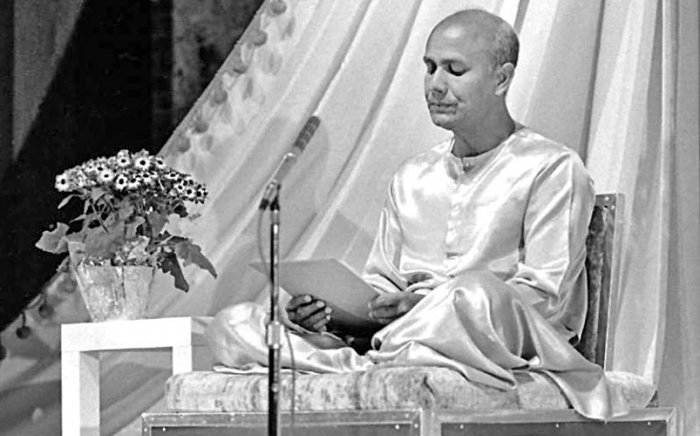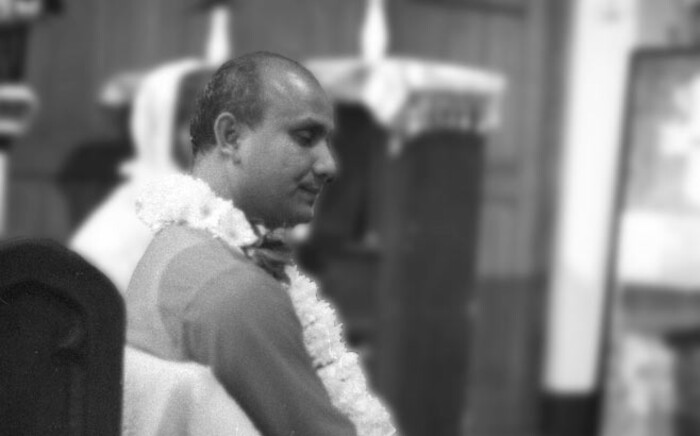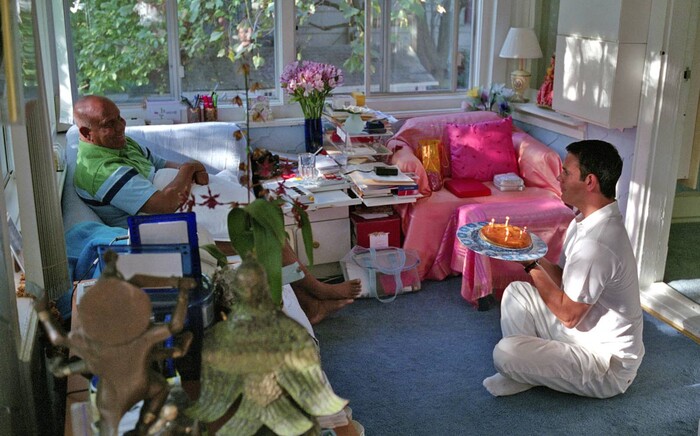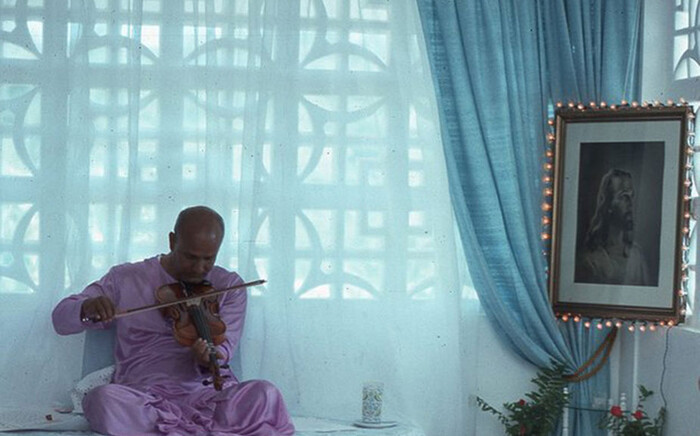Meditation and my association with the Sri Chinmoy Centre has influenced my art in many ways. But in one particular painting this is so in a very direct and obvious way. This painting of 'the Annunciation' - the announcement of the incarnation of Christ, made by the angel Gabriel to the Virgin Mary - hung for several years in the reception of the local Auckland seminary where Roman Catholic priests are trained. Asked to provide an explication of the work, I began . . .

Stylistically, Annunciation is in many ways very traditional. It is perhaps this very fact that draws one’s attention to those aspects of it which differ from the traditional treatments of the subject with which we are familiar.
The image of Gabriel certainly differs from the more androgynous figure we are used to.
It is John Tavener who in one of his compositions uses the words describing Mary:
“Greater in honour than the Cherubim,
And glorious incomparably more than the Seraphim.
Thou who inviolate didst bring forth God the Word
And art indeed the Mother of God,
Thee do we magnify.”
A Cherubim is not a naked winged baby. The giant carved deity at the doorway of an ancient Assyrian temple with the bearded head of a man and the body of a winged bull - that is a cherubim. It was indeed from contact with Assyrian and Babylonian civilisations that the very concept of angels entered the thought of Israel. Gabriel may not technically be a cherubim, but rather a mere archangel, but it was these considerations that led to his being portrayed here in a masculine and Assyrian fashion - a representation that lays more stress on the power and dignity of this messenger of God.
There is a definite tradition of the youthfulness of Mary, but she remains in much art an imposing, regal and - even in representations of the annunciation - matriarchal figure. Here, on the other hand, effort has been made to portray her as just a ‘girl in the garden’; a girl whose direct response to, and communion with, God elevates her not only literally above the mundane but also to a level ‘glorious incomparably more than the Seraphim’.
The golden pillar at her back is a strand of DNA, indicative of the physical life of Christ begun at this moment and of that abundant life that flows inexhaustibly from the moment of Mary’s fiat.
One aspect of the representation of Mary which is notably different from familiar versions is her undoubtedly Asian appearance. It is perhaps unconventional to have a Korean Mary. The painting however does not pretend to be a representation of an historic event - it makes no effort to present a picture of a day in ancient Palestine.
Rather it seeks to convey some rather more central realities and truths of that day. Thus ethnicity, costume and setting become elements that can be endlessly combined to express most aptly those central realities. The point that St. Bernadette stressed following the apparitions at Lourdes was that Mary was beautiful.
There is one element of the picture which, though less central, does, for me, lend added significance to the work.
The banderole which swirls around Mary’s body is inscribed with words taken from a play on the life of Christ by the spiritual master Sri Chinmoy. In this play, on the departure of Gabriel, Mary breaks into verse:
Ah! Simple to learn my Supreme’s Message-Light.
Easy to do His glowing and fulfilling Task.
In me now sings and sports His Nectar Day.
In His Glory’s sky my Goal and I shall bask.
I wanted to incorporate these word into the painting but wanted to avoid the undue prominence they would have if written in English. Fr. Kevin Roach was recommended to me as the person to approach with a request to translate them into Latin.
I wrote to Fr. Roach and very swiftly received a response which not only included a translation but an explanation of his choice of words, the connotations and biblical resonances of the phrases he had used, his interpretations of the densely poetic piece I had asked him to translate.
His scholarship, his kindness, the effort he had taken all delighted me and everyone to whom I showed his letter. That part of my painting became universally known amongst my friends as ‘Fr. Roach’s banderole’.
It remains a cause for great regret to me that it was a day after I bought a card to send my enthusiastic gratitude to Fr. Roach that I learned quite by chance of his sudden death only a few days before. If I had been more prompt I could have informed him of my gratitude.
Because of the part he played, and my great thankfulness for that part, the painting bears an inscription in the lower right -
"Dedicated to the memory of Fr. Kevin Roach without whom. . ."
